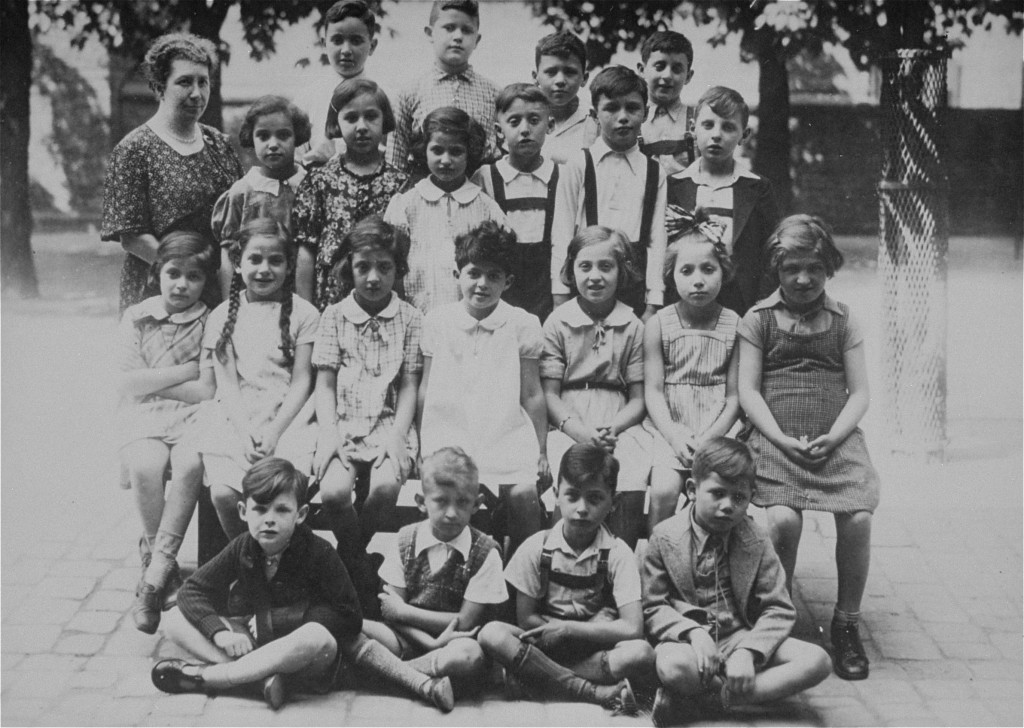
Jewish Communities of Prewar Germany
Before the Nazi takeover of power in 1933, Germany had a thriving Jewish population with strong community organizations. Jews had lived in Germany since Roman times. They were well integrated into German society—they spoke the language, identified with the nationality, and worked alongside non-Jews.
Key Facts
-
1
In 1933 Jews represented less than 1%—approximately 500,000 people—of the total population of Germany.
-
2
The majority of Jews in Germany lived in major cities, such as Berlin, Frankfurt am Main, and Hamburg.
-
3
Jews participated in many areas of German life, such as journalism, law, culture, and medicine.
German Jewish Life
Though they lived almost exclusively in villages and small towns at the beginning of the nineteenth century, by 1900 the majority of—though by no means all—German Jews lived in big cities. In 1910, 60 percent of German Jews lived in urban areas with more than 100,000 inhabitants. In 1933 more than 70 percent of German Jews resided in cities. Only 10 percent of German Jews lived in the countryside, while 20 percent lived in smaller towns and villages. According to a 1925 census, 564,973 registered Jews lived in the Weimar Republic, 71.5 percent of whom resided in Germany’s largest province, Prussia.
[caption=72a55ea6-048d-4358-8fc4-d2e2ff2e1580] - [credit=72a55ea6-048d-4358-8fc4-d2e2ff2e1580]
Scholars have long understood that more aggressive antisemitism, repeated economic setbacks, and political instability limited Jewish acculturation during the Weimar Republic. In recent years, however, researchers have explored how these trends also helped to foster a sense of communal identity among a wide range of German Jews.
Local Communities
An organization unique to central Europe, the Gemeinde (community; pl., Gemeinden), served as a focal point of German Jewish life. Created to centralize local Jewish activities, the Gemeinde embraced all Jews within the country—including non-citizens. Gemeinden, which during the Weimar Republic became public corporations, were empowered by the government to organize local Jewish communal and ritual affairs. They hired rabbis and religious functionaries, maintained and built synagogues, and ran a variety of institutions, among them newspapers, social associations, libraries, health facilities, and charity funds. Tax revenues, collected either by the government on behalf of the Jews or by the community itself, supported communal activities.
Within the Gemeinden, Jews expressed communal identities in many ways: participation at the local level in youth movements, Zionist groups such as Brit Shalom, new Jewish schools, Jewish student fraternities, athletic societies, Jewish libraries, B’nai B’rith lodges, singing societies, the visual arts, and in Jewish museums.
National Organizations
At the national level, in 1893 Jews organized against antisemitic attacks in the Central Union of German Citizens of the Jewish Faith. Other organizations indicate the many forms of ethnic solidarity among German Jews before and after World War I. These organizations included the feminist League of Jewish Women, founded in 1904, and the Reich Association of Jewish Front Soldiers. More than 100,000 German Jews served during World War I; roughly 12,000 died for their country.
Attempts to promote a sense of Jewish identity in Germany differed in important respects from Jewish associational life in eastern Europe. German Jews developed no trade unions and very few professional associations. Although many individual Jews enjoyed acclaim in the arts, cultural activities such as music and theater were only rarely organized under Jewish auspices.
Professions
The career profile of German Jews differed markedly from the general population. Historically prohibited from many professional endeavors, Jews were disproportionately represented in some areas of the economy, such as journalism, law, medicine, and retailing. Concentrated in a small number of professions (more often than not in urban areas), Jews were especially visible to the Weimar Republic’s often violent critics.
While most German Jews were middle class, a significant proportion of the Jews living in Weimar Germany, many of them Yiddish-speaking refugees from eastern Europe, eked out a humble existence as industrial workers, artisans, or peddlers.
The hyperinflation of the early 1920s and the Great Depression (occasioned by the American stock market crash in 1929) greatly complicated the lives of virtually all German Jews.
Critical Thinking Questions
- What challenges do minorities often face in societies? How might challenges and pressures change during of periods of great stress for a nation?
- Can minorities protect themselves and preserve community life in these environments?
- How can knowledge of the events in Germany and Europe before the Nazis came to power help citizens today respond to threats of genocide and mass atrocity in the world?

